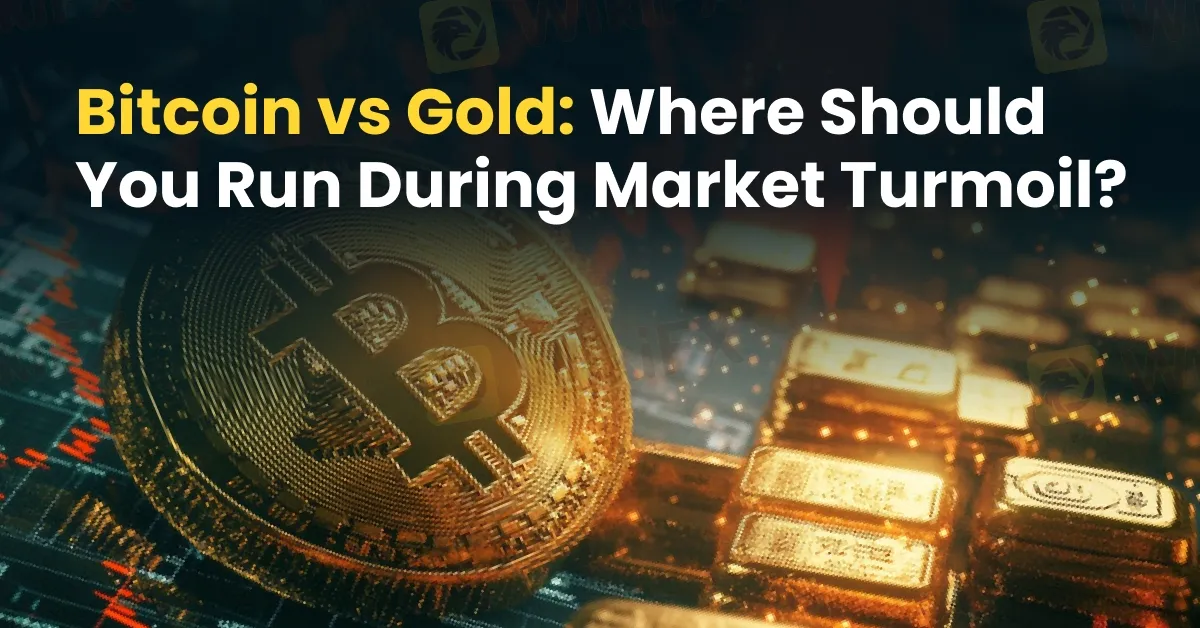Bitcoin vs Gold: Where Should You Run During Market Turmoil?
Abstract:As the Bitcoin recently surged from the $82,000 range to over $93,200 (its highest level in months), investors are again left to ponder: Could Bitcoin be the new gold?

For centuries, gold has held an almost mythical status as a safe haven asset, which is an enduring store of value when markets turn volatile and investor confidence wanes. But in the wake of a digital revolution, a new contender has emerged: Bitcoin. As the cryptocurrency recently surged from the $82,000 range to over $93,200 (its highest level in months), investors are again left to ponder: Could Bitcoin be the new gold?
Gold: The Traditional Bastion of Safety
Golds legacy is deeply ingrained in financial history. Revered for its scarcity, tangible nature, and universal recognition, gold is often viewed as a hedge against inflation, currency devaluation, and geopolitical turmoil. It has outlasted empires and economic cycles alike, remaining relatively stable even in times of crisis.
Moreover, gold benefits from a well-established market infrastructure. It is regulated, widely understood, and boasts high liquidity. Institutional and retail investors alike understand its function in a diversified portfolio.
Bitcoin: The Digital Challenger
Conversely, Bitcoin is a far younger asset, born from the 2008 financial crisis as a decentralised alternative to traditional currencies. Its proponents argue that Bitcoin, with its fixed supply of 21 million coins, shares golds scarcity attribute but offers modern advantages, such as borderless transferability and resistance to central bank manipulation.
Its recent price rally, crossing the $93,000 mark after months of consolidation, has reignited the debate. Advocates point to increasing institutional interest, adoption by payment platforms, and its use as a hedge against fiat debasement as key indicators that Bitcoin may be maturing into a safe haven asset.

Yet, volatility remains its Achilles heel. While gold typically exhibits slow and steady price movements, Bitcoin is known for its erratic swings, often influenced by sentiment, regulatory headlines, or macroeconomic data. Can an asset so prone to double-digit daily shifts truly be considered “safe”?
Different Generations, Different Preferences?
Generational preferences may also play a role. Millennials and Gen Z investors, more comfortable with digital technologies and decentralised finance, often lean towards Bitcoin. Older investors, with memories of golds performance in previous crises, may still favour the yellow metal.
Perhaps the real answer lies not in choosing one over the other, but in understanding their roles as complementary assets. Gold may continue to serve as a foundation of security, while Bitcoin evolves into a high-risk, high-reward counterpart, especially appealing in an era where digitalisation shapes every facet of our lives.
So, is Bitcoin the new gold? Or simply an exciting, yet volatile alternative? As markets evolve and investor behaviour shifts, the safe haven debate is far from settled. What is clear, however, is that both assets are now central to the modern portfolio discussion.

Read more

Gold Prices to Fluctuate This Week Amid July 9 Tariff Deadline, Fed Policy
Gold prices are likely to fluctuate sharply this week as traders keep a close eye on the announcements regarding the US import tariff policy, US Federal Reserve’s take on interest rate cuts, etc. Know in detail the gold price forecast.

Gold Rush Again: What's Driving the Bullion Market Crazy Ahead of US Jobs Data?
Gold prices rebounded on July 1 owing to a declining US dollar and mounting concerns over US trade tariffs. Investors resorted to the yellow metal as key US economic and policy data is about to be made public.

Gold Prices Fall by INR 39,300 in the Last Week? What's Next Week's Outlook?
The past week saw gold prices falling by as much as INR 39,300 per 100 grams across 24 Karat. Read the outlook for gold prices in India for the next week.

Webull Resumes Crypto Trading, Eyes Global Expansion Starting with Brazil
Webull re-enters the crypto market, launching services in Brazil with a Coinbase partnership. Plans for US rollout signal broader industry trends and renewed digital asset access for users.
WikiFX Broker
Latest News
Global stock markets are calling Trump's bluff on tariffs
Trump's tariffs overshadow the pomp and pageantry as Macron meets King Charles
Boeing delivers most airplanes since late 2023 after ramping up 737 Max output
Inflation expectations drift back down to pre-tariff levels, New York Fed survey shows
10 Unlicensed Brokers Exposed – Check Now to Stay Safe!
S&P 500 futures fall slightly as Trump threatens new tariffs, Tesla shares drop: Live updates
Stocks are lower despite Bessent saying several trade announcements are ahead: Live updates
Exposed: Ibell Markets - A Scam Broker That Does Not Allow Withdrawals
Gold Prices to Fluctuate This Week Amid July 9 Tariff Deadline, Fed Policy
America's Deficit Reckoning: How the U.S. debt spiral could spark a crisis
Rate Calc
